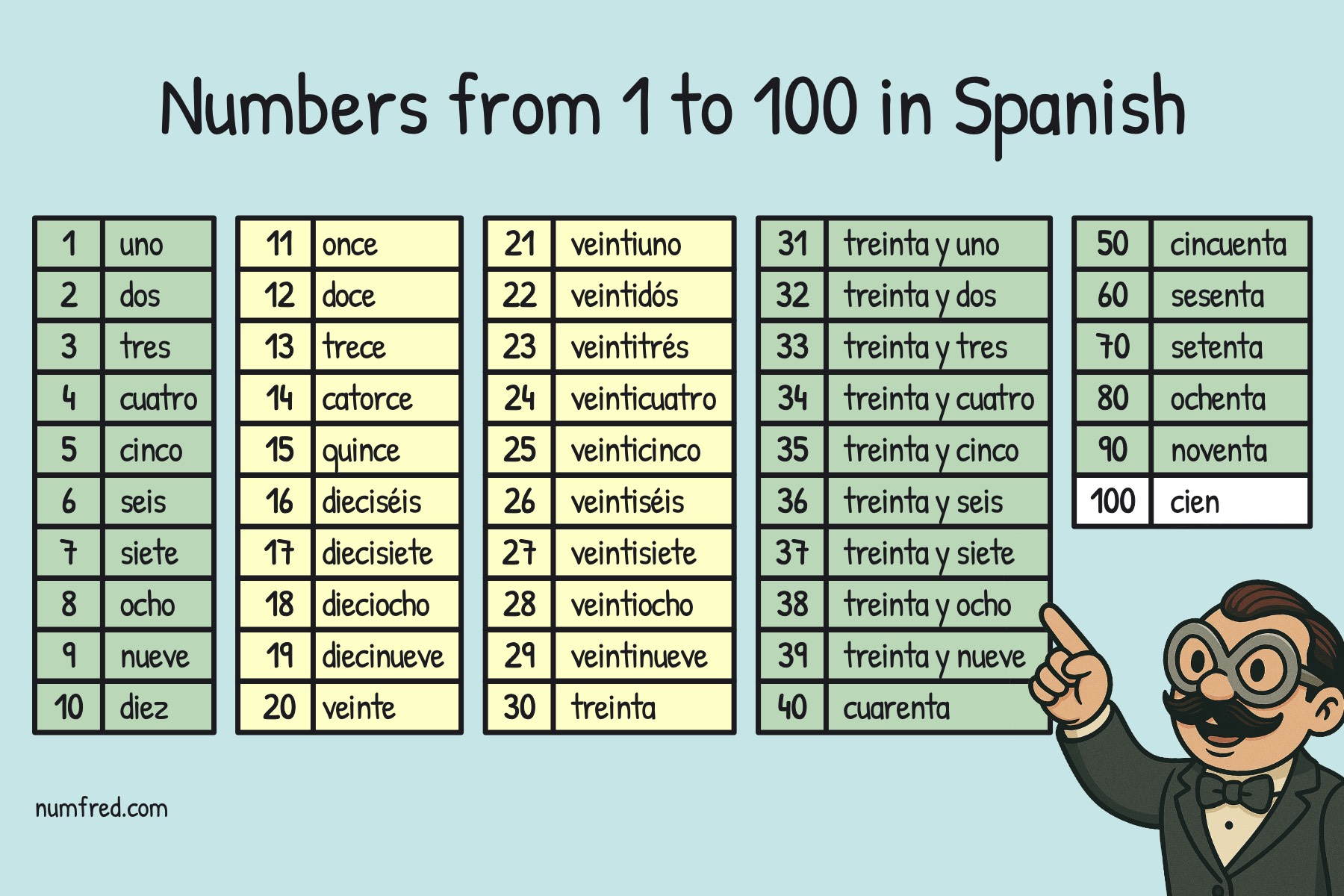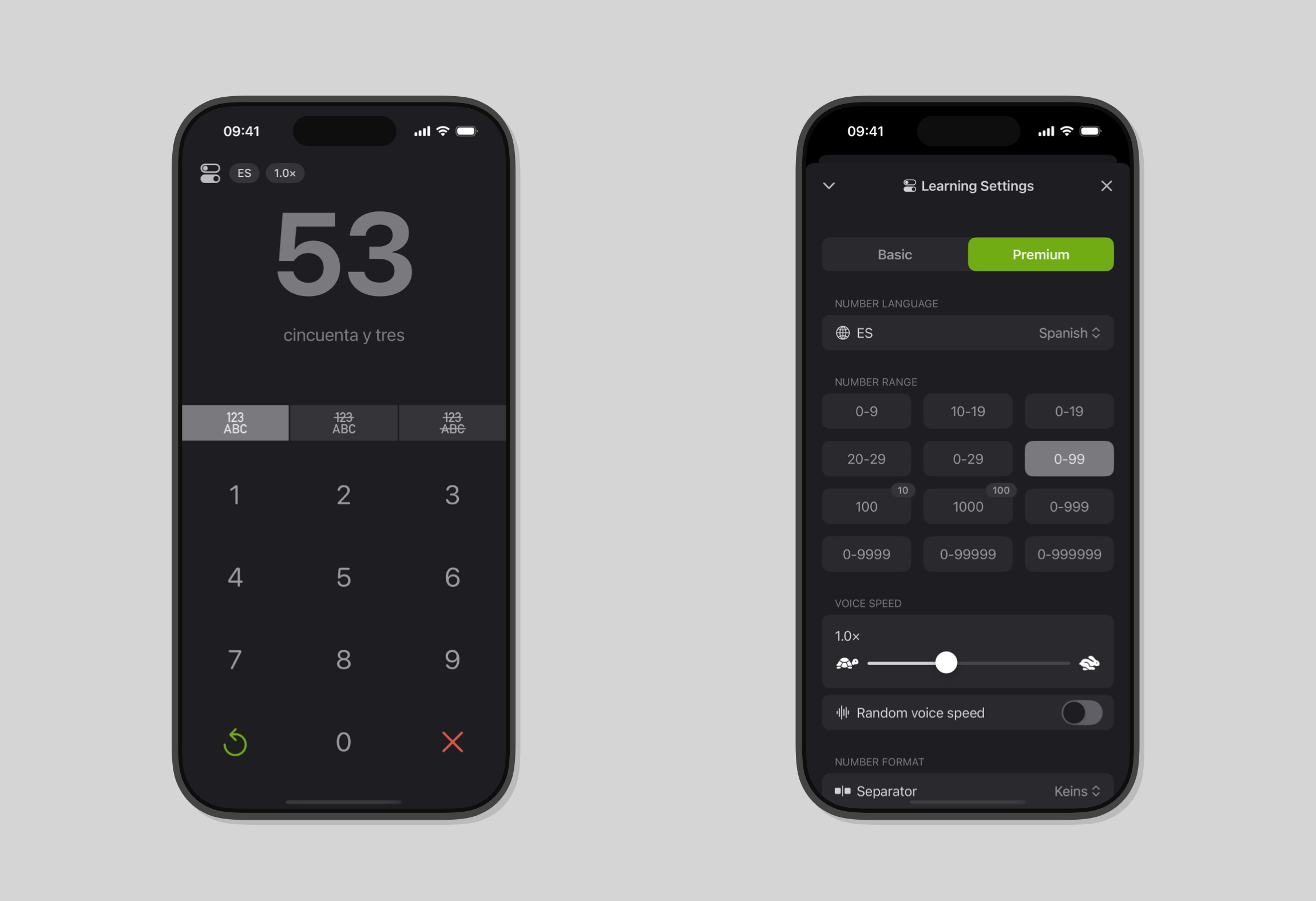
Numfred Blog
Spanish is often praised for its clear pronunciation and regular grammar. However, when it comes to numbers, many learners quickly discover some unexpected challenges. At first glance, Spanish numbers seem simple – but real-world use reveals a few common stumbling blocks.
In this guide, we'll walk you through what to watch out for and how to actually remember them with confidence.
Spanish is a fast-paced language, especially when numbers are involved. Imagine this: you're at a market or restaurant, ready to pay, and someone rattles off numbers like "ciento cuarenta y dos" or "veintiséis" and they're gone before you even realize what you've heard.
The good news? Spanish numbers follow a logical structure. The real challenge is the speed – and a few quirks you'll want to be aware of.
Numbers 0 through 10 are the building blocks. They're regular, essential, and used constantly:
Seems easy? It is. But don't forget: "uno" sometimes becomes "un" or "una", depending on whether the following word is masculine or feminine.
Examples: "Un libro" (a book), but "una casa" (a house).
The numbers 11 to 15 have their own forms that you just have to learn:
Note: These are all one word. Also, "dieciséis" carries an accent mark – crucial for proper pronunciation.
The 20 in Spanish is veinte.
From 21 to 29, there's a peculiarity: The numbers are written together, and many have an accent. It looks like this:
Notable: The numbers 22, 23, and 26 have an accent! Also, all numbers from 21 to 29 are written together – this is not the case later.
Tip: These numbers are super important in everyday life. They sound fluid – and that's exactly what makes them hard to hear. So: listen a lot, speak along, preferably in combination with real examples like:
"Tengo veintitrés años." (I am 23 years old.)
Starting from 30 (treinta), the structure becomes easier – much like English. The tens and ones are linked by y ("and"), and the numbers are written separately:
... and so on.
This pattern continues with the other tens:
Examples:
Reminder: From 30 onwards, always use "y" between the tens and ones – and write the numbers separately. It's consistent and easy to learn!
A classic: phone numbers. In Spain, they are said number by number – so "seis – tres – cuatro...". In Mexico and other Latin American countries, it can also be "setenta y cuatro" (74).
Numbers appear everywhere and each country has its own language habits.
1. "Cien" or "ciento"?
2. Gender Adjustment
3. Don't Ignore Accents
Without an accent, the stress is wrong – and the sound is off.
Here are some smart tips:
Do you want to confidently understand Spanish numbers in everyday life? With Numfred, you can specifically learn Spanish numbers! The app is specially designed to train your listening comprehension for numbers – whether you're a beginner or already advanced.
With Numfred, you train understanding Spanish numbers as you hear them in real life: clear, authentic. You hear a number, type it in, and get immediate feedback – creating a smooth learning flow with quick success experiences. This makes learning Spanish numbers really fun! By the way: The app supports not only Spanish but also English, French, Chinese, Italian, and many other languages. Perfect if you want to train your number hearing in multiple foreign languages.

Curious? Read more in our post on number training in foreign languages, explore the Numfred website or get the app on the App Store:
Spanish numbers are lively, fast and not that difficult if you know what to watch out for. With a bit of structure, targeted listening, you'll quickly be on your way from "uno" to "mil" and even to "un millón".